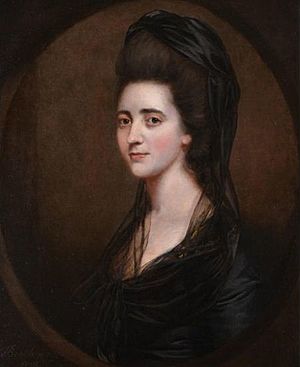Stephen Weston (antiquary) facts for kids
Quick facts for kids
Stephen Weston
|
|
|---|---|
| Born | 1747 Exeter, England
|
| Died | 8 January 1830 Portman Square, London
|
| Nationality | British |
| Occupation | Antiquarian, clergyman |
Stephen Weston was a smart English man who lived from 1747 to 1830. He was known for being an antiquarian (someone who studies old things) and a clergyman (a church leader). He also loved to read and write.
Contents
Growing Up in England
Stephen Weston was born in Exeter, England, in 1747. He was the oldest son of Stephen Weston, who worked for the church in Exeter. His grandfather, also named Stephen Weston, was a bishop (a high-ranking church leader) in Exeter.
Stephen went to some famous schools. He studied at Blundell's School and Eton College. Later, he went to Exeter College at Oxford University. He finished his first degree in 1768 and continued his studies there until 1784.
Life as a Clergyman
Around 1771, Stephen Weston traveled around Europe. He was a tutor, which means he helped teach a young man named Sir Charles Warwick Bampfylde.
In 1777, a friend helped Stephen become the rector (a type of church leader) of a church in Mamhead, Devon. While he was there, he rebuilt the house where the church leader lived.
Later, in 1784, he became the rector of another church in Little Hempston. He even moved some beautiful stained glass from another church into the one at Little Hempston.
Stephen got married in 1784. Because of his marriage, he left his position at Oxford University. He stopped working at the Mamhead church in 1790, but he continued to lead the church in Little Hempston until 1823.
Focus on Art and Books
After his wife passed away, Stephen Weston spent most of his time on art and literature. He was in Paris during the French Revolution in 1791 and 1792. He left in August 1792 because he felt it was no longer safe.
Stephen became a member of important groups that studied old things and science. He joined the Royal Society in 1792 and the Society of Antiquaries of London in 1794. He lived in London and was part of a group of people who loved art and culture.
He visited Paris again in 1802 and once more in 1829. People sometimes called him "Classic Weston" because he knew so much about old texts. He also had many female admirers.
Stephen Weston passed away in London on January 8, 1830, when he was 82 years old. After he died, his books and old coins were sold at auctions. He also left money to help poor people in the towns where he had been a church leader.
Stephen Weston's Writings
Stephen Weston was a very busy writer and translator. In 1802, he translated part of the Rosetta Stone from Greek into English. The Rosetta Stone is a famous ancient stone with writing in three different languages. His translation was published in 1811.
He also wrote many other things, including:
- Notes about his travels.
- Studies of old Greek and Roman texts.
- Notes about the plays of William Shakespeare.
- Discussions about the Bible.
- Translations from different languages like Arabic, Chinese, and Persian.
Some of his interesting works include:
- Viaggiana: Remarks on the Buildings, &c., of Rome (1776): This book was about buildings in Rome.
- Letters from Paris during the Summer of 1791 (1792): These were letters he wrote about his time in Paris during the French Revolution.
- Conformity of European with Oriental Languages (1802): This book looked at how European languages were similar to languages from the East.
- Ly Tang: an Imperial Poem in Chinese by Kien Lung. With Translation and Notes (1809): He translated a Chinese poem into English.
- Short Notes on Shakspeare (1808): These were his thoughts on Shakespeare's plays.
- A Slight Sketch of Paris in its Improved State since 1802 (1814): Another book about Paris after his visit.
Weston also wrote for different magazines and books. He contributed to Archæologia, which is a journal about old things. He also wrote for the Gentleman's Magazine and the Classical Journal.
His Family Life
In 1784, Stephen Weston married Penelope Tierney. She was the youngest daughter of James Tierney. Sadly, Penelope passed away in France in late 1789 or early 1790. She was only 31 years old.


